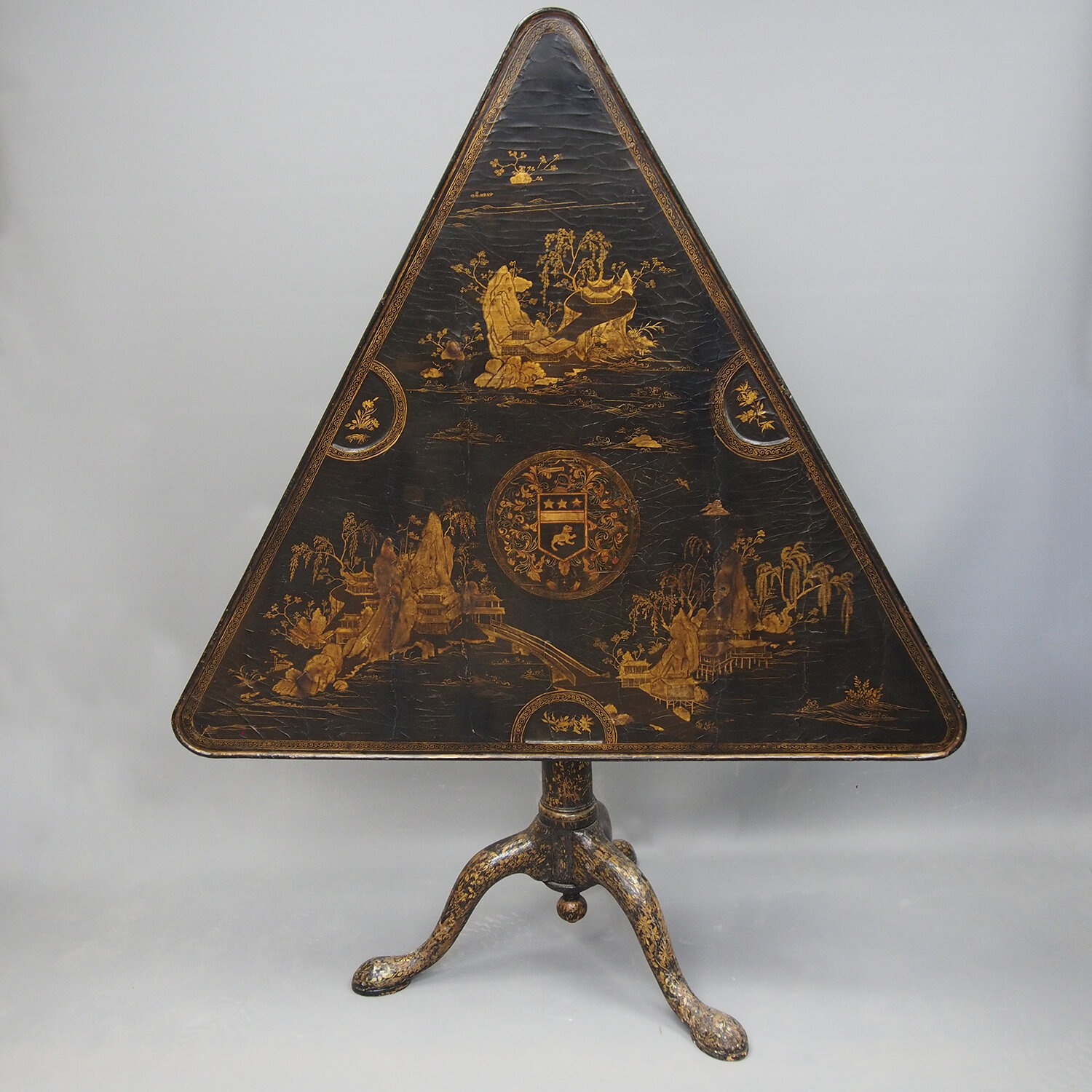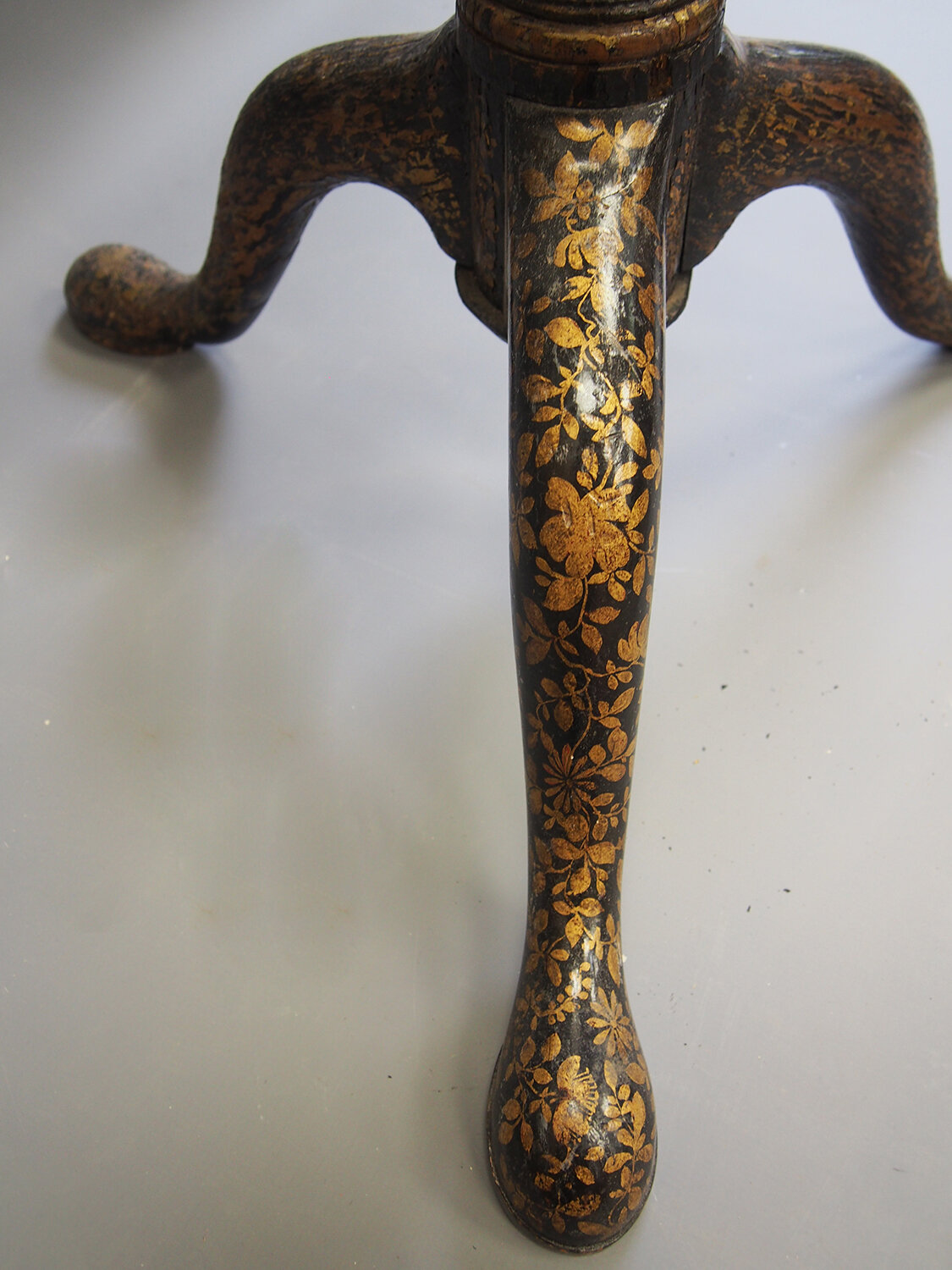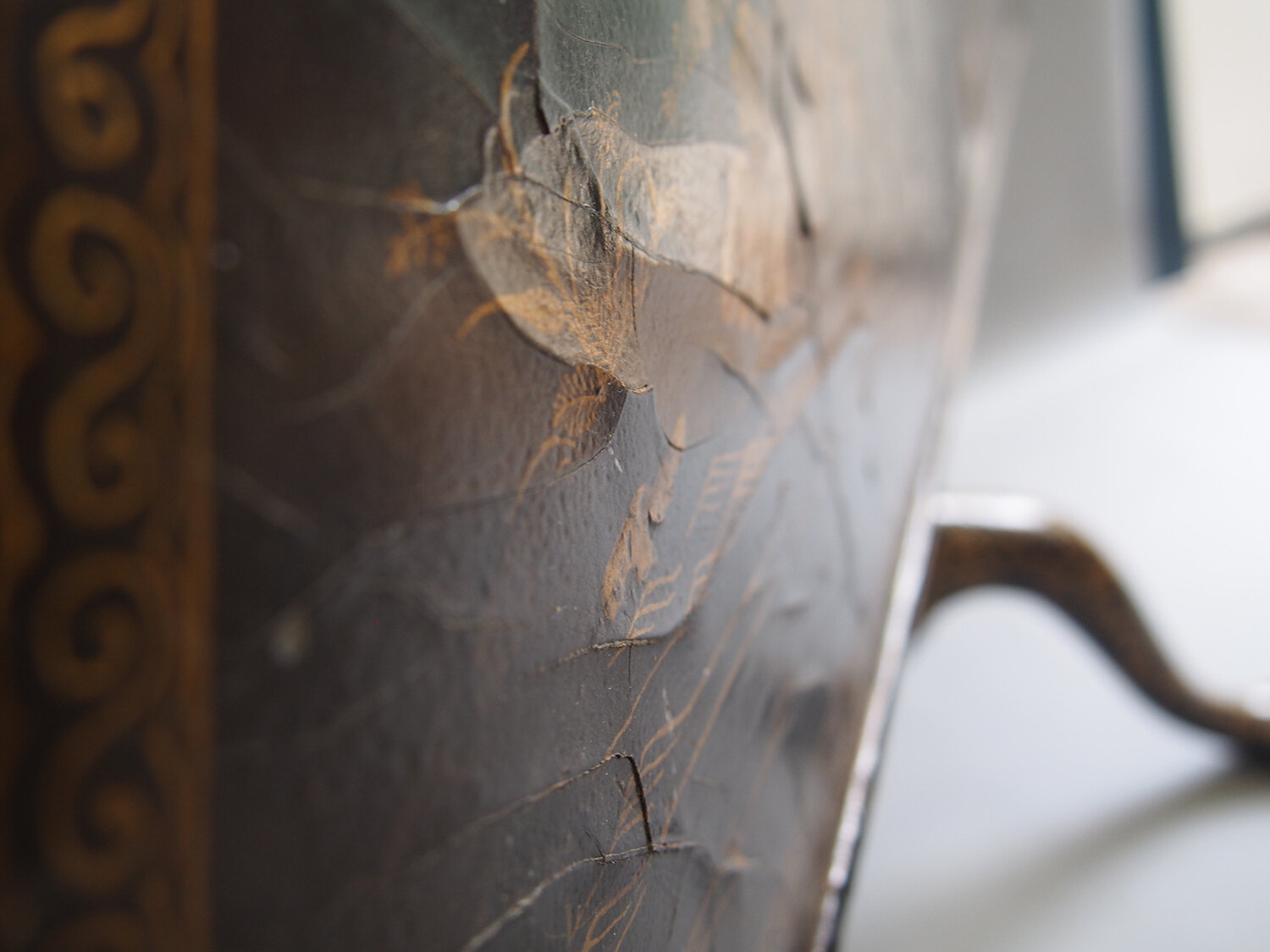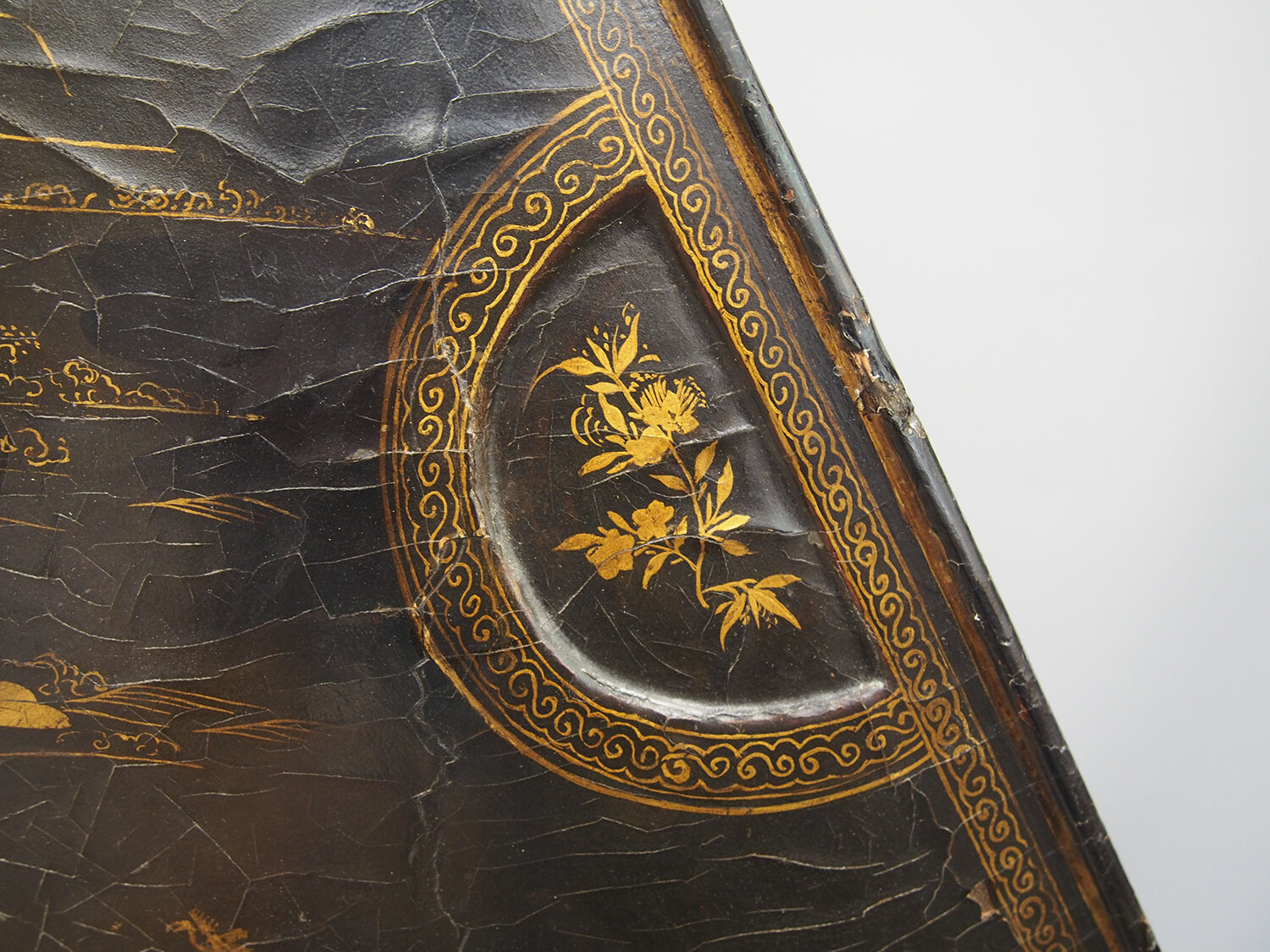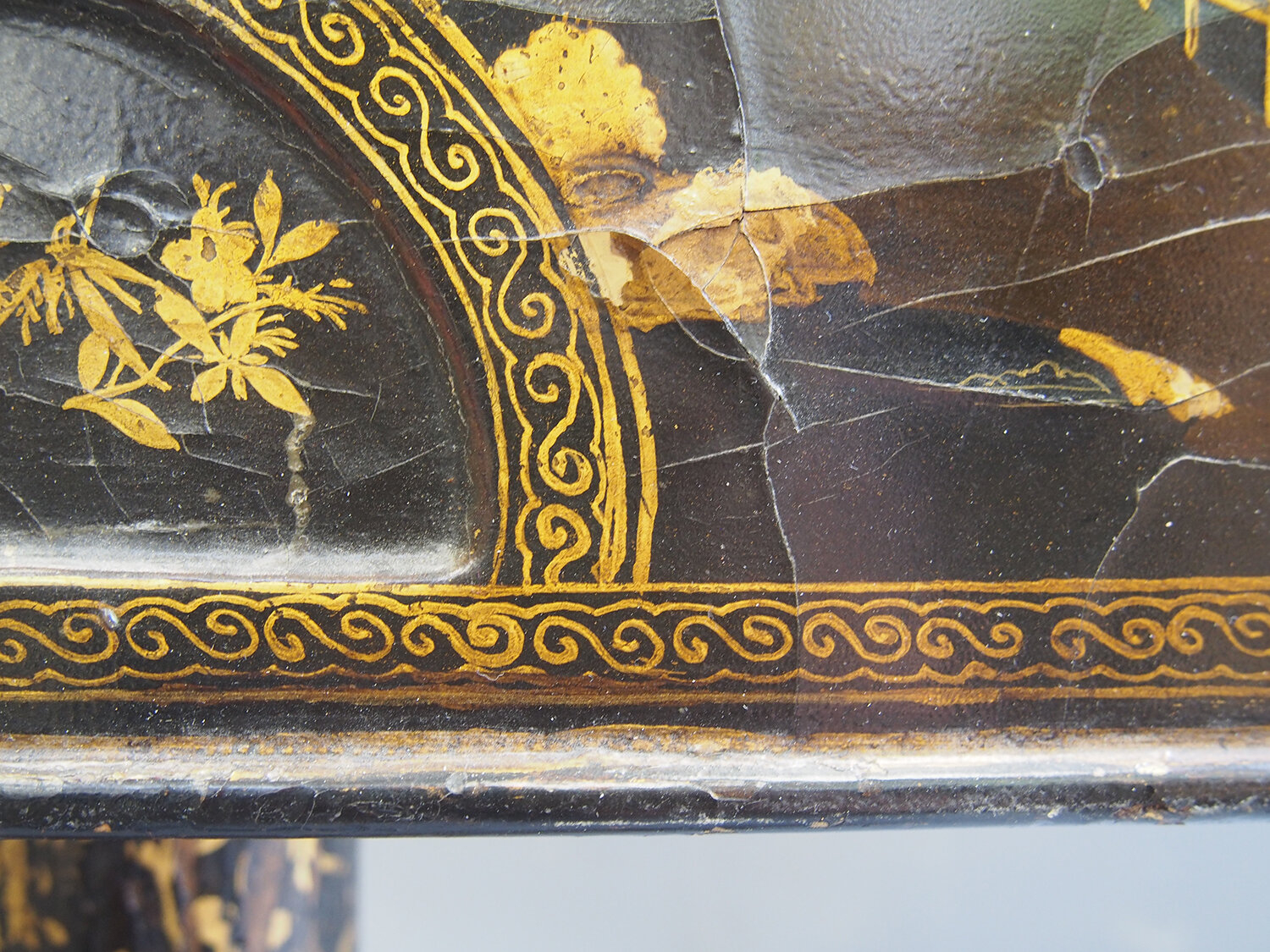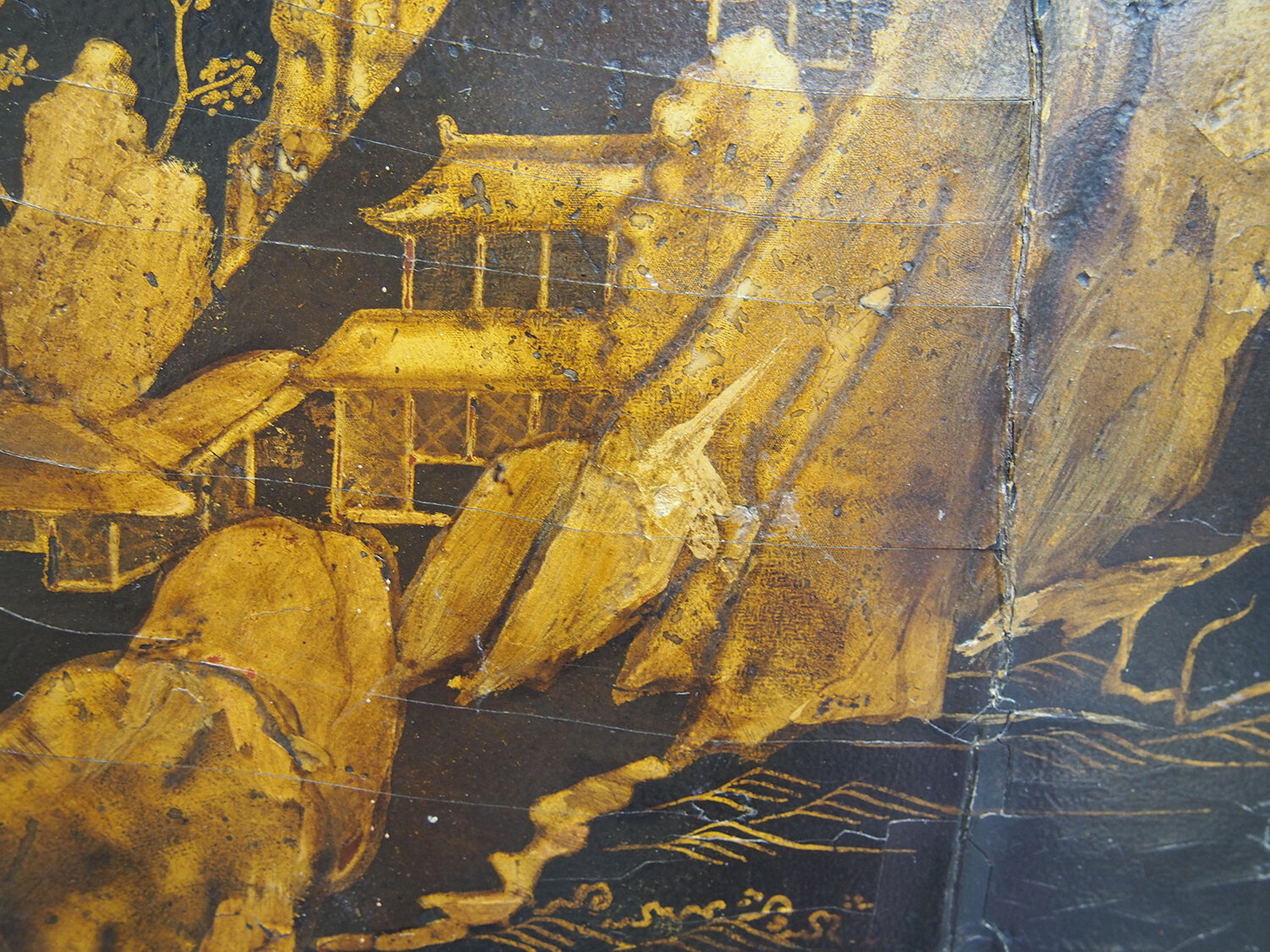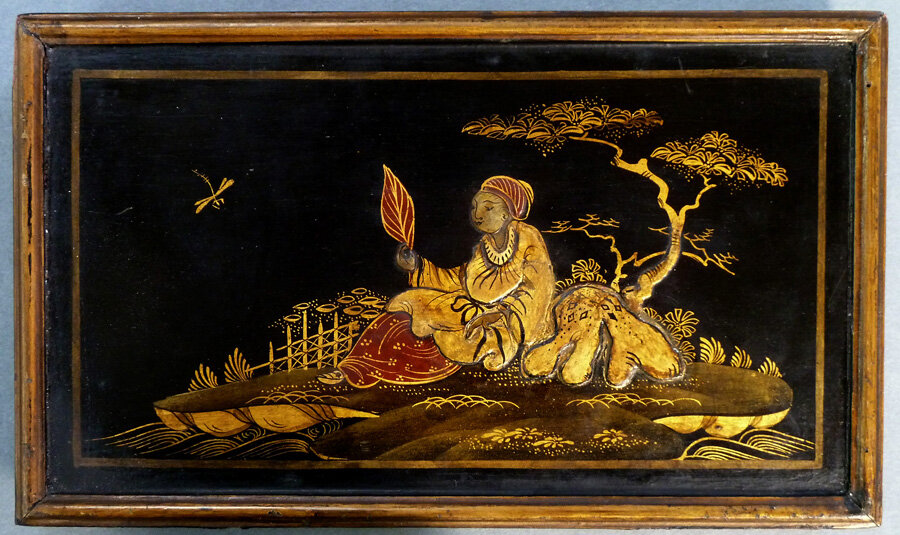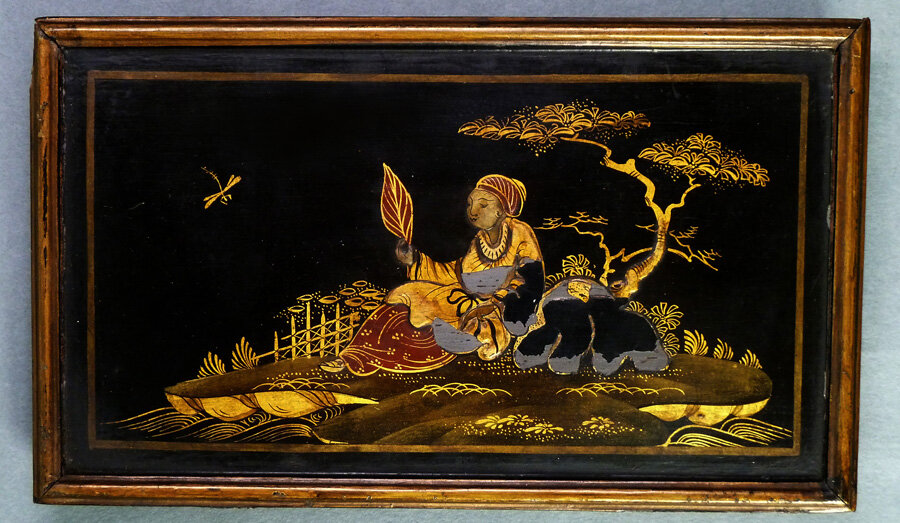asian lacquer and japanning
We specialise in Asian lacquer and European japanning and have extensive experience in treating objects from China, Japan, Korea and Myanmar.
Asian lacquer objects are made from the sap of the lacquer tree, which hardens under humid conditions and can be polished to an incredible shine. Once the lacquer has been completed the decoration is applied, often in rich materials, such as gold and silver powers and foils, mother-of-pearl and ivory. When European traders started to bring lacquer objects to the West in the late 16th century, the supply couldn’t meet demand. Europeans therefore imitated the Asian objects using paint, varnishes and gilding—a process that is called japanning.
After treatment: Japanese lacquer writing box, Private Client
After treatment: Japanese Lacquer miniature shrine (Zushi), Chiddingstone Castle
Treatment process: Myanmar dry lacquer sculpture, buddha, private client
case studies: asian lacquer
Private client
Triangular Games Table
This table is a rare triangular games table, made in China in the early 18th century for the export market. It came to us with overpainting on the whole surface, lifting and in need of consolidation. It was clear that it was overpaint, but, like a wall-to-wall carpet, it wasn’t clear what was underneath. In the process of carrying out the consolidation, we noticed tiny areas where an earlier lacquer was showing. We carried out some discrete excavations of the lacquer and discovered another layer still underneath that one: the original, highly detailed one.
After discussion with the client we chose to remove all of both layers of the later overpaint to reveal the original surface of the table. As we scraped and dissolved the retouching away, we discovered all sorts of little details in the original lacquer such as windows in buildings that hadn’t been translated in the rougher retouching, as well as the brilliance of the real gold.
This one is still in progress, so come back to see final details.
marble hill house (english heritage)
Chinese lacquer screen
This eighteenth century eight panel Chinese lacquer screen is one of the few surviving objects from the collection of Henrietta Howard, on display in her home at Marble Hill House, Twickenham. Made to order in the 1730s in the Chinese port of Canton, Howard’s coat of arms was applied in lacquer.
We often use a shimbari technique to consolidate lifting flakes of lacquer, where sticks braced against a frame apply varying amounts of gentle, localised pressure after introducing adhesive underneath. In an approach developed by Tristram, fibreglass kite-making rods are used. If you’re interested in more detail, you can read this article that Tristram published.
Private client
Japanese lacquer box
This Meji period Japanese lacquer box had a light-damaged surface, water marks and accretions of dirt. After the staining was removed the surface was conserved with a Japanese lacquer-based treatment that restored the surface gloss and protected the gold makie decoration.
examples of conservation of japanning
After treatment: Japanned cabinet on a gilded stand, eighteenth century, Marble Hill House (English Heritage)
This small panel from an eighteenth century japanned tavern clock was missing parts of the raised decoration. The areas were restored, gilded and retouched to match the original surface.





